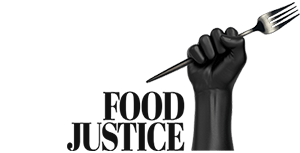
WORLD HUNGER DAY
How a child’s body responds to hunger — and the lifelong consequences of malnutrition

According to Statistics South Africa, there are millions and millions of hungry people in South Africa. This includes children. The numbers are staggering, statistics that defy comprehension for those reading them. But big numbers obscure what hunger means at an individual level. In particular, what does it mean for young children at a vulnerable stage of their development?
Dr Tim De Maayer is a paediatric gastroenterologist at Rahima Moosa Mother and Child Hospital and a lecturer at the University of the Witwatersrand.
***
Friday 28 May is World Hunger day. This is part of a series of articles Maverick Citizen is publishing this week looking at the scale, impact and responses to hunger in South Africa. The articles will also be published in a special newsletter on Friday.
Children under the age of five are developing and maturing rapidly. Unfortunately, research suggests the effects of undernutrition at this stage are far-reaching and may affect them for the rest of their lives.
A young child does not only require nutrients for growth, but organ development is at a critical stage. Undernutrition may start in utero (during pregnancy), due to compromised placental blood supply or a poor maternal diet.
Brain development is a good example of this crucial early development.
The nervous system forms early in gestation, but rapid brain growth and development of neurons and synapses continue for at least the first three years of life. Early nutrient deficiencies may result in devastating spinal and brain malformations if the expecting mother is folate deficient. More commonly, less severe deficiencies may result in sub-clinical manifestations which impact on the ability to maintain attention or to regulate emotions, for example.
When a child’s nutrient resources are limited, the body prioritises vital functions like breathing and supplying blood to tissues. Non-vital functions such as growth and development are compromised. In severe malnutrition, this process is known as reductive adaptation. This means energy is conserved by reducing physical activity and growth, while basal metabolism (the rate at which the body uses energy while at rest to maintain vital functions such as breathing and keeping warm) is slowed down by decreasing protein turnover and decreasing cellular pump activity. Immune responses and inflammation are also reduced, which results in susceptibility to infections and poor wound healing.
It is estimated that half of under-five-year-old hospital deaths globally have malnutrition as a contributing factor.
Thankfully, the majority of undernourished children will survive into adulthood, but this does not mean they will not bear the effects long term.
The first 1,000 days
The first 1,000 days of nutrition after conception are the most vital for long-term health into adulthood. In 1990, David Barker, a British epidemiologist, showed that adults who suffered cardiovascular events were more likely to have been born with low birth weight, a consequence of in-utero undernutrition. He coined the phrase “thrifty phenotype”, and theorised that early undernutrition leads the body to reprogramme itself to hoard nutrition resources, enhancing food-seeking behaviours and energy storage for leaner times.
Several mechanisms explaining the link between early life exposures and non-communicable diseases in adulthood have now been elucidated.
These include disruption of endocrine regulation (especially after exposure to excessive stress hormones in utero), permanent alterations in organ structure (for example, less functional renal cells leading to hypertension later in life), and alterations in gene expression. For these reasons, many diseases “of lifestyle” including obesity, hypertension, type 2 diabetes, cardiovascular disease, osteoporosis and metabolic syndrome have now been linked to undernutrition early in life. This concept is referred to as the Developmental Origins of Health and Disease (DOHaD).
In South Africa and many other low-middle income countries, the rise of non-communicable diseases and obesity have resulted in the double burden of malnutrition. Obesity and undernutrition occur in the same communities and within the same families. DOHaD may go some way to explain this paradox, as pregnant women who are overweight and hypertensive often have a disrupted placental blood supply to their unborn foetus, who will be born small and at risk for non-communicable diseases later in life.
Equally worrisome, however, is the over-consumption of “empty calories”.
It is cheaper to buy processed foods than it is to buy fresh nutritious produce. Numerous South African studies have shown inadequate micronutrient intake, especially calcium, iron, zinc, vitamin A and riboflavin. Subclinical iron deficiency is known to impair cognitive development, while zinc and vitamin A deficiency leads to a poor immune response.
The roots of this poor intake are obvious to anyone visiting a supermarket: aisles are flooded with cheap ultra-processed foods, high in sugar and fat, but devoid of nutrients. Unethical advertising by big food corporations promoting more starch to our youngest children should be regulated.
Government should do more to promote equal access to nutritious foods in our unequal society. The sugar tax may be a good departing point, but should be used to lower prices of locally sourced fruits, vegetables and animal products. Furthermore, schools and early childhood development (ECD) centres could contribute by banning the sale of unhealthy foods at their tuck shops and vending machines, and educating students about a healthier lifestyle.
Last, the healthcare sector should assist in nutrition education, ensuring pregnant mothers are well-nourished, and promoting breastfeeding and healthy infant feeding. DM/MC



















Comments - Please login in order to comment.